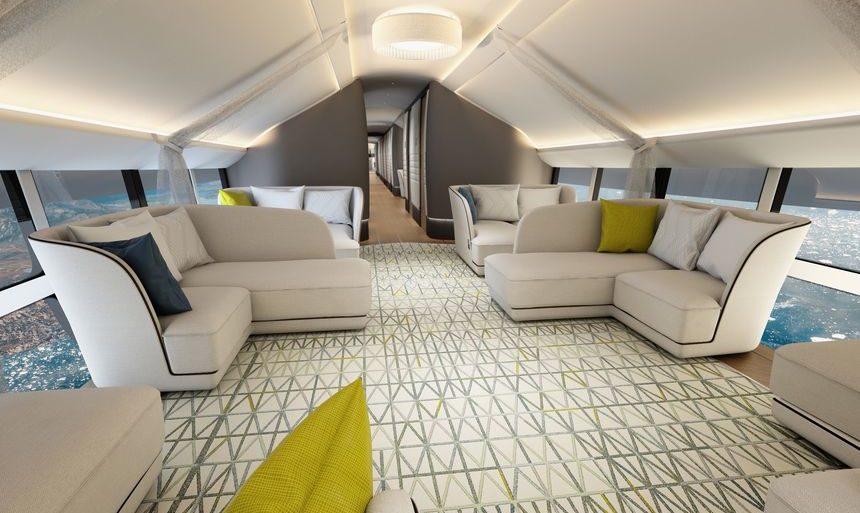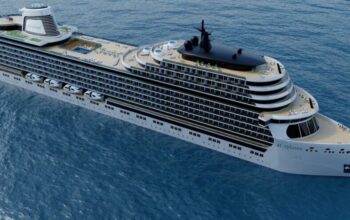Looking for a Greener, Smoother Way to Travel? Behold, the Blimp
A new generation of airship firms maps out a smoother, quieter way to travel
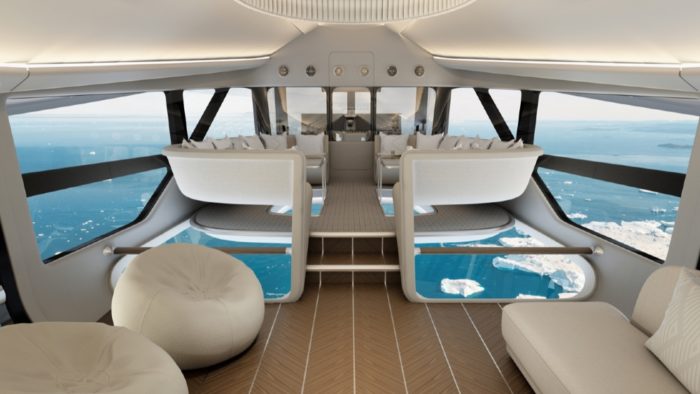
Written content from Katie Deighton
The blimp is back—or, it will be, if its backers can sell their new vision of slow but smooth, spacious and safe flights.
Blimps in recent decades have been most conspicuous as floating billboards. But a handful of companies, including Worldwide Aeros Corp. and Google co-founder Sergey Brin’s Lighter Than Air Research and Exploration LLC, are engineering airships’ wider use. Some say the vehicles’ ability to fly for days without refueling and dock without a runway make them an untapped logistical tool to aid humanitarian disaster responses and for military operations such as surveillance and reconnaissance.
Others are reappraising the airship as a travel experience in and of itself.
OceanSky Cruises AB, a Swedish aviation company, plans to be flying 16 guests and seven crew members from Norway to the Arctic and back in a luxury aircraft buoyed by helium sometime between 2024 and 2025. In doing so, it hopes to revive a mode of passenger transport that many assumed was consigned to history after 1937, when 36 people died as the Hindenburg airship went up in flames on its approach into a naval air base in Lakehurst, N.J.
OceanSky Cruises says today’s airships are a sustainable way to fly, emitting substantially less carbon per person than airplanes, as well as less cramped, noisy and stressful than your best experience on a plane.
“We can offer passengers a comfortable space, like they’re on board an ocean liner, but four times faster,” said Carl-Oscar Lawaczeck, the chief executive and founder of OceanSky Cruises.
But persuading people that an airship is safe to board may prove challenging.
Footage of the Hindenburg disaster—one of the first catastrophes caught on film—remains in the collective memory, said Gonzalo Gimeno, a marketing adviser to OceanSky Cruises.
It did not help that a prototype test flight of the Airlander 10, a vehicle that OceanSky Cruises plans to fly to the North Pole, ended in a low-impact crash in 2016. The developer of the 100-person craft, U.K.-based Hybrid Air Vehicles, or HAV, said it completed four further test flights without incident after rebuilding the Airlander, which it calls a hybrid air vehicle rather than an airship or a blimp, given that it is not lighter than air.
OceanSky Cruises is designing a website that will explain why the Airlander uses helium, rather than the hydrogen and diesel that set fire to the Hindenburg, and that the outer skin is made of flameproof fabric, Mr. Gimeno said.OceanSky Cruises is designing a website that will explain why the Airlander uses helium, rather than the hydrogen and diesel that set fire to the Hindenburg, and that the outer skin is made of flameproof fabric, Mr. Gimeno said.
“There’s a lot of education that has to be done in terms of airships by us,” Mr. Gimeno said.
Executives think onboard interior design can also help soothe nervous passengers. Features like handrails and seat belts, which are less necessary than on planes given the smoothness with which the Airlander flies and the relatively low speed with which it takes off and lands, have been added, in part to boost passengers’ sense of familiarity and safety, said Max Pinucci, OceanSky Cruises’ head of design.
Other amenities planned for OceanSky Cruises’ 320-foot-long airship, which is currently conceived as a luxury airborne experience, include guest cabins, a restaurant and a bar.
HAV in May named a string of transit routes it said could be served on a more timetabled, affordable basis, including a four-hour hop to Vancouver from Seattle. Even these flights would offer each passenger much more space than a plane, said Tom Grundy, the company’s CEO.
“Every seat has direct access to the aisle, and the aisles are accessible for everybody, so we can get rid of things like asking someone to move if you need the bathroom during the flight,” Mr. Grundy said.
Operating at altitudes of around 10,000 feet means cabins don’t have to be pressurized, so the tiny, reinforced windows of planes, which tend to fly above 30,000 feet, will make way for floor-to-ceiling panoramas, Mr. Grundy added.
But flying low may present problems on the ground, said Dale Richards, a senior lecturer in human factors engineering at the U.K.’s Nottingham Trent University.
“Imagine you’re in the garden, looking up at the lovely blue sky, and then you see this big airship slowly coming over, blocking out the sun, and possibly people looking out of the windows at you,” said Dr. Richards.
HAV said that while the Airlander flies lower than fixed-wing aircraft, it still flies a substantial distance above the ground.
The following is from January 30th 2021
Luxury Blimps May Become the New Superyachts
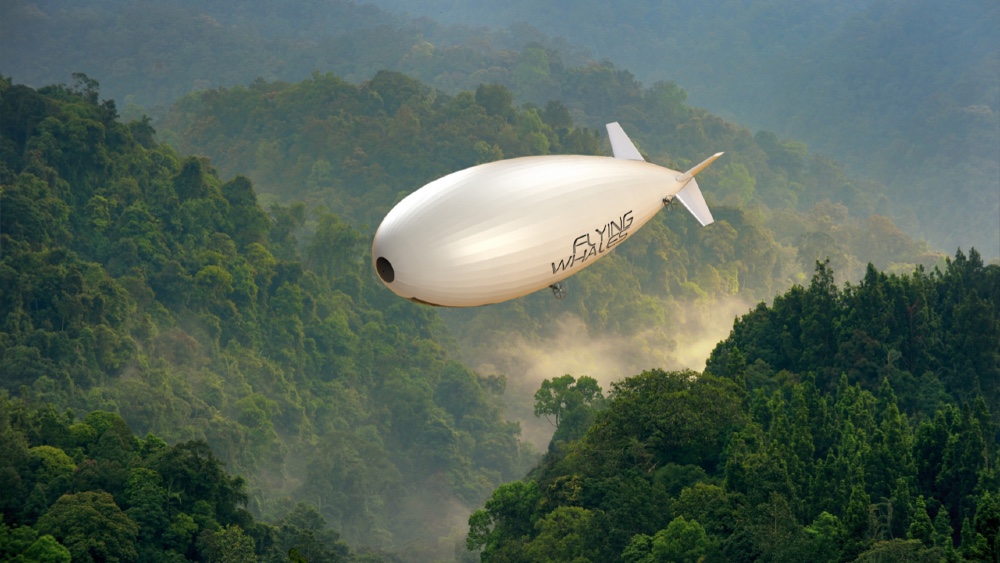
Zeppelins are usually equated with the Hindenburg disaster, but today’s airships use modern materials and some aspire to be as luxurious as superyachts.
Written content from Jemima Sissons
Less than a century ago, the airship was the symbol of elegant travel, gliding silently across the skies. The explosion of the Hindenburg changed the fate of airships in an instant, giving them the reputation of floating bombs.
A number of companies in the U.S. and Europe are trying to stage a comeback for these floating giants, marketing them not only as an antidote to loud, emissions-spewing jets, but also as a much more civilized way to travel.
The Airship 2.0 is certainly a different beast from the zeppelin of 100 years ago. The latest generation relies on non-combustible helium, and bulletproof materials that like vectran, mylar and kevlar to make the balloon both lightweight and durable.
Companies like Flying Whale in France and U.S.-based Skunk Works, the research arm of Lockheed Martin, are designing airships to carry cargo and medical supplies to remote locations around the world. Skunk Works says its airships could be used as passenger carriers if buyers want to modify them after purchasing the design.
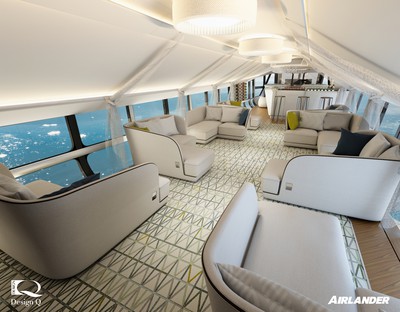
California-based Aeroscraft has a 220-ft. airship in production that uses solar power for propulsion. The company says it can be used for jaunts, such as trips between Hawaiian islands. Aeroscraft forecasts that it will be another three to five years before its airship receives FAA certification for passenger travel.
The company has also been working on concepts like the Neona, a futuristic, donut-shaped flying saucer. More UFO than floating superyacht, the company did not give a timeline for when Neona might go into production.
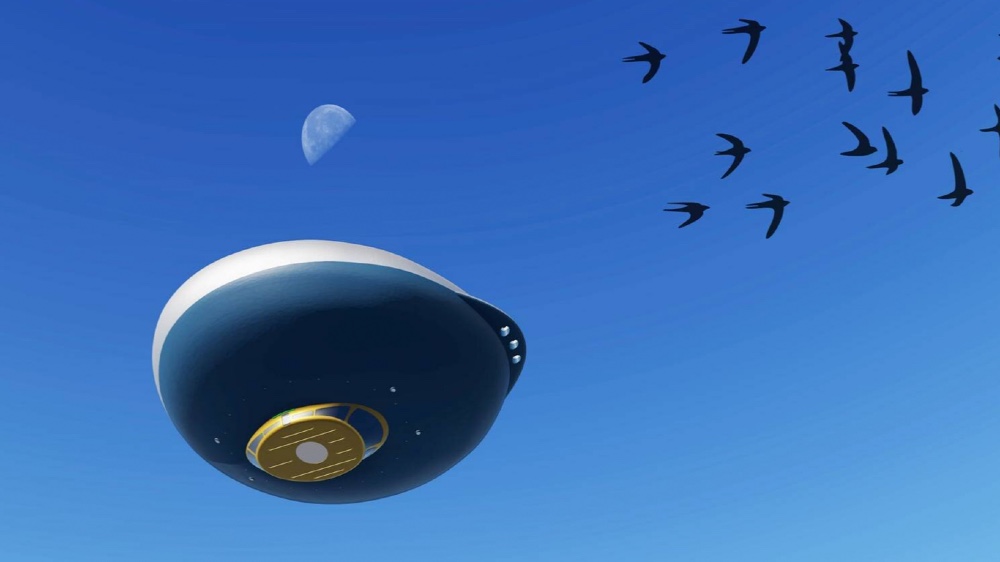
A U.K. company is leading the charge for creating airships that will undertake passenger journeys, much like a cruise ship or yacht. Hybrid Air Vehicles said its floating goliaths will offer private passenger travel beginning in 2024. Read more from Robb Report.
Follow “News Without Politics” for updates on luxury airships. Stay informed on travel and business without media bias

